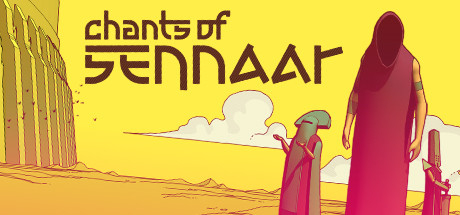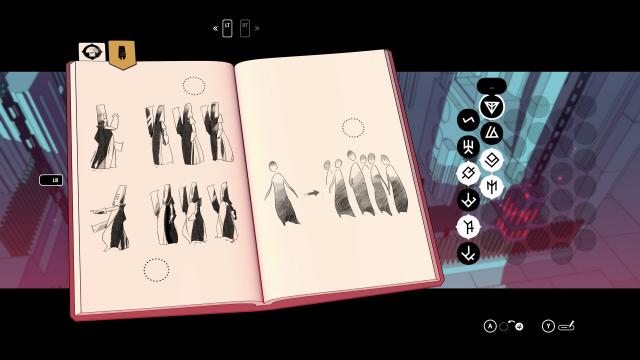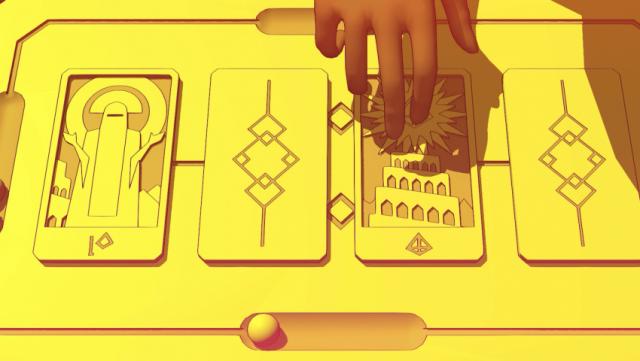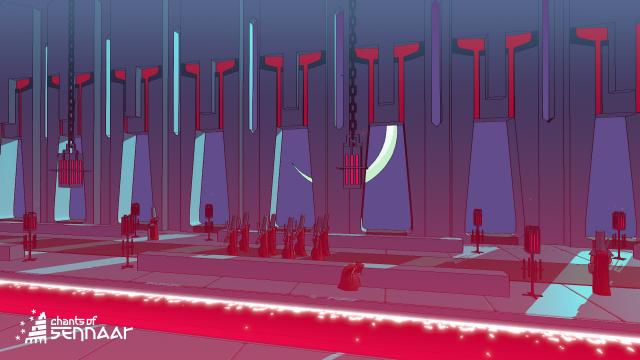Existing User Log In
New User Registration
Register for a free account to gain full access to the VGChartz Network and join our thriving community.





America - Front


America - Back

Rundisc
Adventure
 (Add Date)
(Add Date) (Add Date)
(Add Date) (Add Date)
(Add Date)
| Owners: | 0 |
| Favorite: | 0 |
| Tracked: | 0 |
| Wishlist: | 0 |
| Now Playing: | 0 |
"Language is not a genetic gift, it is a social gift. Learning a new language is becoming a member of the club – the community of speakers of that language." – Frank Smith.
It's easier to appreciate Smith's quote when you lack said social gift; after all, language has the power to bind or divide. In a world where our enigmatic protagonist begins without knowing a single word of the native tongue, that poses a serious problem. As your hooded figure awakens from a stone sarcophagus, you maneuver through what seems like a town's outskirts and happen upon a valve-turning puzzle. The written directions would seem blatantly obvious, if you knew what the foreign glyphs meant. Therein lies the heart of Rundisc's Chants of Sennaar: a dual-tiered system of brainteasers wherein learning to read the instruction manual is half the battle.
Sennaar's flow is centered on seeing symbols smattered across the game world or within someone's speech bubbles and then disinterring the translation. It won't take long to make out simplistic nouns or verbs, especially when the apparent options are "close" or "open," but it becomes far more daunting when the townspeople's vocabularies expand past north of 25 or 30 unique words and they speak in full sentences. Now, you have to absorb the glyphs you’re seeing, the syntax of a sentence, and other hints to piece everything together. The great thing about Rundisc's design is the number of contextual clues scattered throughout in different forms, be it illustrative murals, simple pantomimes, little roadshow amusements, or a numerical sequencing system, and on and on it goes.
To avoid forcing you into full-time linguistic archeology, your player-character totes a handy logbook to document every unique glyph. You can then click on said icon and manually type out your best guess; further, your guess is then displayed above that corresponding symbol across the game world. It's an especially helpful gesture to ensure the syntax matches with the population's dialect and guides you toward filling out the blanks. The thing is those are merely guesses. At particular intervals while scouring the world, you'll automatically put a few sketches onto two pages. Similar to Return of the Obra Dinn, cementing official words requires associating the glyph with the correct picture across both pages; only then have you made a string of successful translations (which is visually reinforced by a cleaner white font).
In a weird way, a great portion of Sennaar's engagement rides on this cataloguing feature. The crisp visual & sound design of it while jotting down more glyphs is quite polished; moreover, the UI feels snappy and intuitive, while the information layout between conversational text, the glyph database, every sketchbook page, and more looks concise. It's a great vital piece of Sennaar's puzzle design, with a good failsafe to avoid you brute-forcing the correct word match, save for if you only have trouble with the last one. It's not without quibbles, of course. For a game about translation, it's strange how glyphs are only arranged by when they’re discovered; so, there's (currently) no way to shift them around based on alphabetical order or structural similarity – which would be helpful in delineating between persons, places, or actions.
The core challenge isn't about translating a language, it's about translating several languages. Just when you've acclimated yourself to the warmth of the quaint townspeople, you're a stranger in a strange land yet again. While hinted at before, The Tower of Babel connection becomes crystalized after venturing into what's effectively a new level. Not only is this obvious from the new aggressive iconography and bleaker aesthetic, but also a different set of glyphs; though similar to the previous, there's a far greater sternness married with their penmanship and extra new words centered around strength and aggression. That disparity in personality can be seen through every clan, be it their calligraphy, tone, or sentence structure. Certain cultures will be uniquely challenging because of that; for me, deciphering the Bards' Arabic-esque handwriting with Yoda's speech pattern was my Achilles' Heel. An aggravating combo, that truly was. These demands are enhanced after actuating fast-track terminals that thrust you into being an interlocutor between two separate peoples.
It's an ingenious setup where you're constantly evolving to understand a new tribe while balancing treasure hunts and sequence-based conundrums. There's a funny catch to respecting both sides of the coin too. A couple of times I was caught in this loop of pushing ahead at full steam, rarely jotting anything down. Sometimes there's ample room to chat with numerous people and/or explore vast swathes of land to soak up as much 'content' at once. Since I wasn’t careful, the glut of new glyphs overwhelmed me after opening the database. Even though each dialogue sequence can be re-watched (via a hologram replay), it never matches the flow of seeing those events the first time. It’s like an invisible curb emphasizing the consistent need to write down incisive notes. You have to treat yourself as much a beat reporter as a puzzle-solver.
Sennaar doesn't start and end with translations though. On occasion, it'll dabble in one-off ideas or infrequent stealth segments. It begs the question: with such prodigious depth and time towards learning alien dialects, why distract players with anything other than this rewarding core gameplay loop? I typically lean towards that sentiment, but that's missing a key detail: this world isn't only about languages. Given the Roman Legionnaire cosplaying of a certain group, the string of stealth sections makes contextual sense when investigating their ethos up close; plus, there are some neat design nuggets too. That's not to say every ancillary mechanic succeeds – especially the odd social stealth part - but most gambles benefit the main course in subtle ways.
This linguistic foundation is just as thematically potent as it is mechanically engaging. Given my previous reference to the Tower of Babel and your role, it's plainly obvious how Sennaar is inverting the biblical tale's trajectory; and yet, there's something more substantive to its simple premise. Despite being a terse script stretched across 8-9 hours (not bad for $20 too), these language puzzles double as great world-building background. As previously mentioned with the disparities across tribes, the tone in each strata subtly informs what each of them treasure and their small bits of unique history. Along with learning fictional languages, you're also forming a subjective internal mythology to sustain your exploratory ambitions.
That appreciation is further elevated by exceptional presentation. While I still think Sable is slightly better at capturing Mœbius' fantastic breadth of work, any title integrating that look is automatically among the best-looking games of the year regardless. Beyond the rich color contrasts, like deep-crimson streams cutting through a towering blue sandstone fortress, Julien Moya and Rachelle Bartel's acute understanding of scale is consistently showcased – with rarely a complaint against the fixed camera system. Combined with Thomas Brunet's great soundtrack, its world design carries a sense of deep history.
Chants of Sennaar isn't the first game to explore its world through language, but it's perhaps the most ensorcelling. By harmonizing the dual nature of its puzzles, learning to read the instruction manual and then following it, Rundisc's deceptively enticing core constantly finds new ways of encouraging you to learn about Sennaar's stratified societies. Through its inventive template melding gameplay and world-building, its inspired twist on a biblical tale still captures the Old Testament's mythos and grandeur. Along with a fantastic art style, genuine intrigue, and more, it ultimately translates into a towering achievement.
Contractor by trade and writer by hobby, Lee's obnoxious criticisms have found a way to be featured across several gaming sites: N4G, VGChartz, Gaming Nexus, DarkStation, and TechRaptor! He started gaming in the mid-90s and has had the privilege in playing many games across a plethora of platforms. Reader warning: each click given to his articles only helps to inflate his Texas-sized ego. Proceed with caution.









